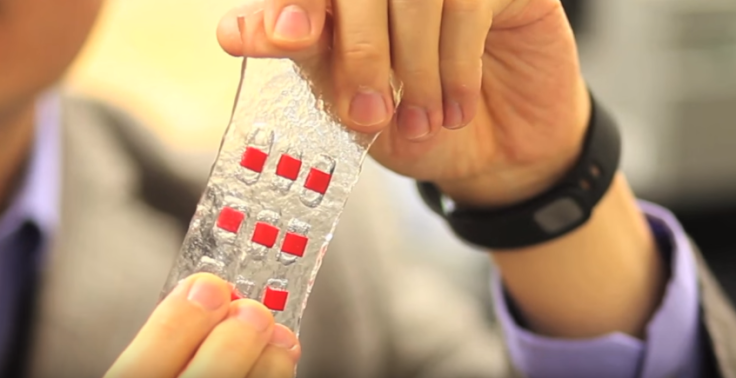Band-Aid Of The Future: MIT Develops Electronic Bandage That Heals Wounds Faster

Science has given us all types of bandages that go beyond just covering scrapes and cuts. Some of them can stop infections or put an end to bleeding in as little as 15 seconds, while others can detect bed sores before they even become visible. Now researchers from MIT have created one out of a malleable polymer equipped with sensors that’s capable of stretching over your skin and healing wounds fast.
Xuanhe Zhao, an associate professor in MIT’s Department of Mechanical Engineering, has been developing a hydrogel bandage, made of highly absorbent polymer chains, that’s capable of being stretched to nearly double its length (as seen in the video below) to cover wounds in areas where placing a traditional bandage would be difficult. It’s also been embedded with sensors for monitoring temperature, and indicating when medicine stores are running low, so they can be pumped through drug-delivery channels into reservoirs, where they’re held and administered as needed.
All of these sensors can be monitored via a smartphone, giving doctors and other medical professionals insight into how the wound is healing and if the medicine is working. It would also allow them to monitor patients’ temperatures in order to look for fever. This so-called “smart wound dressing” is very similar to the recently announced Ibuprofen patch.
Though they’re made up of 90 percent water, hydrogels are normally inflexible, easily broken, and unable to effectively stick to electronic materials. In wound care, hydrogels are used to absorb fluids like blood, while keeping the wound area moist to promote a better healing environment. Though he didn’t specify how, Zhao said his team made the adhesive strong enough to not only attach to electronics, but also metal, glass, aluminum, bronze, and more — making it applicable outside of medicine.
"Human tissues are soft and wet, but electronic devices are mostly hard and dry," Zhao told the Daily Dot. "We propose to use hydrogels with similar mechanical and physiological properties as human tissues to form long-term high-efficacy interfaces between human body and electronics."
Though the bandage might initially be used to treat burns or surface injuries like cuts or scrapes, Zhao believes it can be used for a variety of other applications — he imagines it being used underneath the skin or on the brain to deliver neural probes.
“The brain is a bowl of Jell-O,” Zhao said in a press release. “Currently, researchers are trying different soft materials to achieve long-term biocompatibility of neural devices. With collaborators, we are proposing to use robust hydrogel as an ideal material for neural devices, because the hydrogel can be designed to possess similar mechanical and physiological properties as the brain.”
Hydrogels are increasingly being used in a variety of other, non-wound-healing ways. For example, a team of researchers are currently looking at how it can be used in the next generation of condoms, which contain anti-HIV properties. Other researchers are using it to replace surgical implants for drug delivery, or as an aid to build 3D-printed blood vessels. Needless to say, there seems to be a bright future for hydrogels in health care.
Published by Medicaldaily.com



























